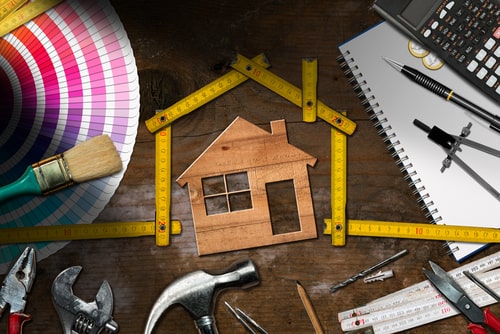
Roscoe Properties Management (RPM), one of the most prominent multifamily property manager companies in Texas, is Roscoe Property. It specializes in hands-on rental management, and offers hassle-free move-out services. RPM is headquartered in Austin, but has branches in Dallas, Houston Houston, Atlanta, San Antonio. Denver, San Antonio, San Antonio, San Antonio, Charleston and San Antonio. RPM provides multifamily management services as well commercial property management. Although its primary focus is the South, the company recently expanded into Arizona.
RPM will merge Phoenix-based Maverick Residential. The new firm will provide third party property management services to multifamily unit owners in 17 states. Together, the two firms will have more than 1,800 employees. RPM will be the brand name for the combined firm. They will combine to have over 84,000 apartments across the U.S. including 49,000 units Texas. They will also have nine national offices.

RPM and Maverick will join forces to become the largest third-party provider of real estate services in America. RPM will oversee more than 200 communities totaling more than 4,900 apartments, and Maverick more than 1,750. With the exception of a new regional office in Phoenix, both companies will continue to operate their current offices. The combined company will have more than 1,800 employees including over 500 in the Austin location. RPM will soon be the nation's largest provider of property services upon completion of the merger.
B/K Multifamily Services, which has managed more that 40,000 units in total since 1998 has a solid track record with institutional investors and funds. It has a strong reputation for managing affordable housing. According to the 2020 National Multifamily Housing Council rankings, the company was the 42nd most favored apartment manager in the country.
RentCafe integration has been made into many Roscoe property as part a plan to make it easier for residents. It provides resident portals that allow residents to make maintenance requests and pay rent online. It also allows for prospects to apply online. These websites help convert leads, speed up the sales process, and increase cash flow. RentCafe’s websites are social media-enabled and encourage participation from the online community.

Find information about the culture, working conditions, training opportunities, and compensation of a company whether you're looking for a job or are just curious about it. Also, you can find information about the company's culture and people through reviews. These factors will help you decide if Roscoe Property management is the right place for you.
FAQ
What is the average time it takes to complete a DIY project?
The average DIY project takes anywhere from two to four hours. The complexity and difficulty levels of the project determine the length.
What is the hourly rate for a handyman?
A handyman charges between $50-$75 per hour. Most have been doing this for years. Their average work week is about 10 hours. They are well-known and do not need advertising.
They are more likely to become specialists and build customer relationships over time.
Their key difference from other contractors is their quickness, reliability, and affordability.
Most people have at least two or three of these guys that they can trust enough to call for help when they need it.
Some people are so successful that they start their own company.
Why should I hire a handyman rather than doing it myself?
Hiring a handyman saves time and money. It saves time and saves money. You can also hire a handyman who has the right equipment and supplies to do the job right.
How long does it take to become a handyman?
To be a professional handyman it takes years of hardwork. It usually starts with helping friends and family and gradually expands into a full-time career.
You'll start to learn all the skills needed as you go along.
Does a handyman make suggestions about how to improve my home?
Absolutely! Actually, a handyman has been trained in all aspects home repair and maintenance. A handyman is able to identify what needs fixing and what can be left alone. So don't hesitate to ask for advice whenever you need it.
Statistics
- Mila keeps a commission of 20% for each completed service performed by Friends and charges various service fees regarding work done by Pros. (appjobs.com)
- According to the U.S. Bureau of Labor Statistics, in May 2020, there are 1,357,630 handymen employed in the U.S.. (angi.com)
- More than 20% of homes in America have outdoor living spaces, including decks and patios. (mrhandyman.com)
- Our handyman services for seniors are provided by professional senior helpers who have been serving the community for over 20 years with 98% customer satisfaction. (cantatahomeservices.org)
- With a strong housing market, the handyman and general maintenance worker industry are expected to grow by nearly 10% in the next decade. (housecallpro.com)
External Links
How To
How to replace a damaged tile
Step 1: Remove the old tiles.
Remove the old tiles from your flooring and put them aside. These tiles will be useful later on, so you'll need to keep them intact. If they're damaged or missing pieces, note which ones they were so you don't run into problems finding replacements.
Step 2 -- Choose New Tiles
Take a look at some different options available for tile replacement.
-
You can find a tile replacement that is similar to the one you have just removed.
-
You can use the measurements taken when you removed the tile to locate a matching piece. This makes it easier to get the right size without having to measure again.
-
Consider looking for colors, patterns, textures and sizes in a variety of shapes and colors.
-
Consider what grout you prefer to use. Some people like a consistent color while others prefer mixing it.
-
Be sure to select a tile that is resistant against moisture.
-
The final thing to consider is the location of the tile. It will save you time and money if you make sure there's enough space for the proper installation.
-
Once you've found the tile that suits your needs, you can place your order online.
Step 3 Install the new tiles.
For your new tiles, use the same method that you used to install them. Be careful to align them properly so they fit together perfectly.
Step 4 -- Clean Up
Clean up any debris on the floor before you apply the last layer of protective material.
This will prevent dirt or dust from collecting between the tiles and causing mold.
Step 5 -- Sand the Floor
After cleaning everything, sand down the floor to remove any loose particles left behind by the previous step.
Step 6 -- Finish Off
Once the floor is smooth, apply the protective coatings. Wait until the floor is completely smooth before applying the protective coatings to the tiles. Wet paint could stain the tiles' surface.
To help prevent stains, you could always use a product called 'damp-anddry' on your floors.
However, it will not cover all possible problems that may arise after you have installed your tiles. Consider adding an anti slip coating to your protective layer if you have kids.
Remember to let the protective sealer remain on for several additional weeks before you move into your home.